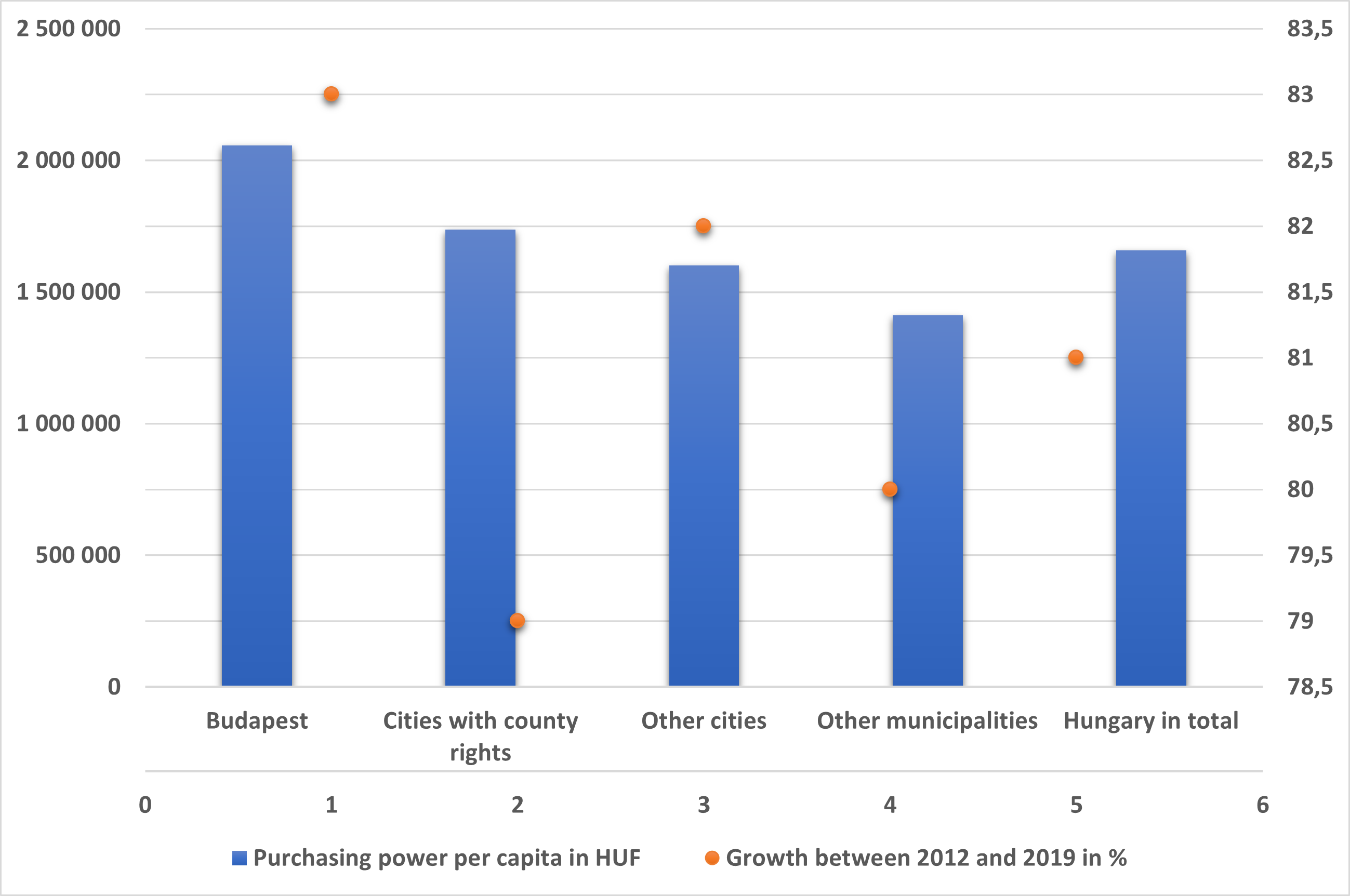Where do the wealthiest Hungarians live? – statistics

To calculate the quality of life in statistics, purchasing power is a very important factor. Therefore, the Hungarian GKI Economic Research Co. calculated the purchasing power of different Hungarian cities and towns going back to 2012.
According to GKI Economic Research Co., the purchasing power per capita in Hungary was about HUF 1.7 million (€4,600) in 2019, but major differences were observed in different villages, towns, cities, and districts around the country and the capital.
In contrast to the average, the purchasing power per capita was about HUF 2.1 million (€5,700) in Budapest in 2019.
This is 24% higher than the national average. Within the capital, District XII is the leader with HUF 3.4 million (€9,300), followed by District II with purchasing power worth a similar HUF 3.3 million (€9,000). The lowest purchasing power was calculated to be HUF 1.4 million (€3,800) in District VIII, which is only two-thirds of the national average, reported GKI Economic Research Co.
Storeinsider says that, based on the results, the per capita purchasing power of cities with county rights is 5% higher than the national average, while the purchasing power of other rural cities is 3%, and this number for small towns and municipalities is 15% lower than the average of HUF 2.1 million (€5,700).
The numbers show that the purchasing power per capita in 389 Hungarian municipalities did not reach HUF 1 million (€2,700).
On the other hand, the situation of 42 municipalities and 5 districts in the capital is outstanding. There, the purchasing power per capita was over HUF 2.2 million (€6,000).

Data from Storeinsider.hu
The growth is probably thanks to the fact that the Hungarian minimum wage has been rising, but unfortunately, it still lags behind the European standard. Contrary to this, the corruption perception index in Hungary is the highest in Europe.
In Hungary, between 2012 and 2019, the purchasing power per capita has nominally increased by 81%.
The purchasing power grew in 99.5% of municipalities and only fell or stagnated in 0.5%.
In addition to some (mostly wealthier) districts of Budapest, the north-western agglomeration of Budapest, several municipalities in the north-western part of the country (mainly in Pest, Fejér, and Komárom-Esztergom counties), and around Lake Balaton, the purchasing power was able to grow much faster than the average, and Bács-Kiskun County is also among the counties with relatively rapid growth.
The purchasing power per capita of the top quarter of municipalities defined on the basis of income has increased by 92%,
while the same statistics of the municipalities in the second, third, and fourth quarters only grew by 75%, 72%, and 69% respectively.
According to the analysts at GKI, this means that the advantage of higher-income, richer municipalities grows faster compared to poorer municipalities which were unable to benefit as much from the favourable economic situation in 2019.
Source: Storeinsider.hu, Gki.hu





